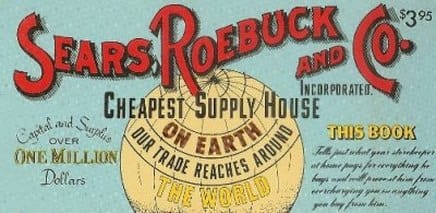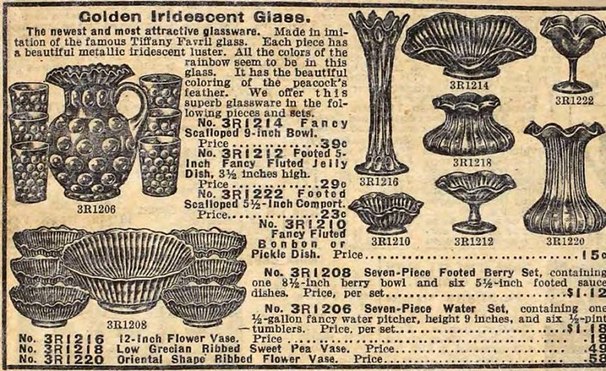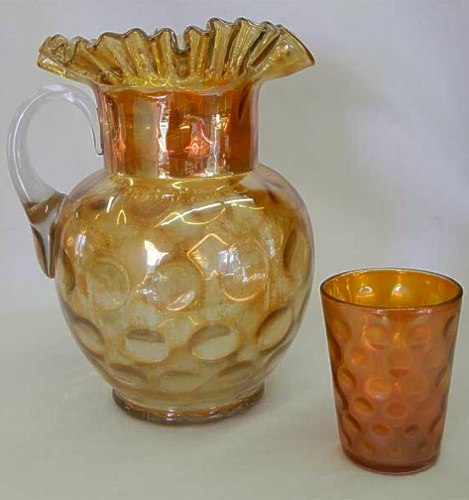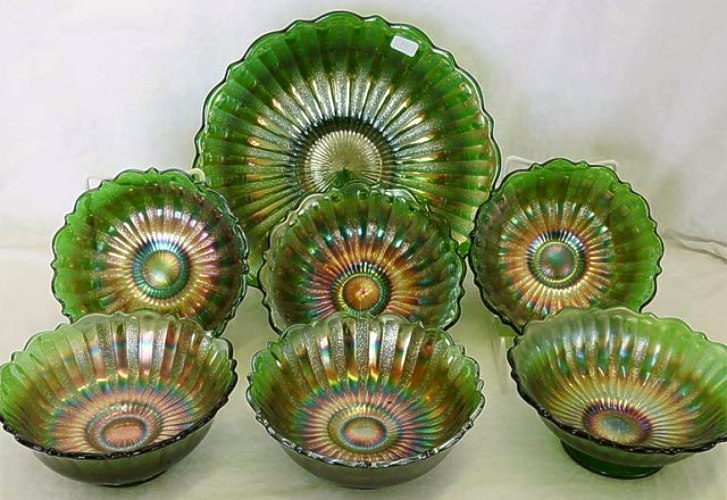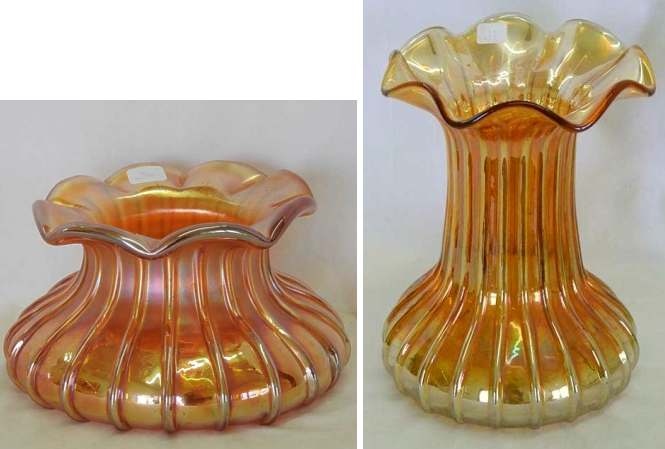Carnival Glass ads: Sears Roebuck Catalogues 1909 to 1927
|
The wonderful Sears catalogue ads used on our Sears Roebuck feature pages are courtesy and copyright of Phil Prince. Phil's passion for the glass lead him to these amazing advertisements, which will be of great interest to current andfuture collectors of the iridescent glassware that we call Carnival Glass. We are extremely grateful for his permission to use them. Sears Roebuck issued its first catalogue in 1888 from its base in Chicago. It became a household name in providing by mail order literally anything from small domestic items through to "build-it-yourself" homes supplied in kit form ... even automobiles! Thanks to Phil's meticulous research we are able to show you the amazing adverts for Carnival Glass that were shown in the catalogue pages from 1909 through to 1927, starting here with 1909. |
Fall 1909 catalogue
Fall 1909 catalogue
|
This is the earliest Sears ad for Carnival Glass that has been found - so far. What does it tell us? Firstly, the glass was all made by Fenton, which had started making Carnival some two years earlier in 1907. Hence the description "newest ... glassware." Secondly, the ad plays to a theme that we have seen elsewhere, that Carnival was promoted as an imitation of "famous" (and considerably more expensive) Tiffany Favrile glass, with "the beautiful coloring of the peacock's feather." Thirdly, the catalogue offering was relatively plain and functional, in comparison with the explosion of artistic design that was shortly to follow. Perhaps Fenton, and Sears, were testing the market to see if there was a demand for this new "most attractive glassware"? Fourthly and astoundingly, is the appearance of two Rib and Panel vases (3R1218 and 3R1220). This discovery corrects the previous attribution of these vases to Imperial's production of the 1930s and later! |
|
The patterns shown in the ad above are: 3R1206: Inverted Coin Dot (*) 3R1216: Long Thumprint. 3R1208, 3R1214, 3R1210, 3R1212 and (possibly) 3R1222: Stippled Rays (*) 3R1218 and 3R1220: Rib and Panel. * pictures on the right are courtesy of Seeck Auctions. |
It is fascinating to compare the Fenton Carnival Glass that was being offered by Sears in their 1909 catalogue with what is to be seen in that other invaluable source of contemporary information - the wholesaler, Butler Brothers. There, we find essentially that same blend of fairly plain and functional items which included Long Thumbprint vases and a selection of Stippled Rays items of various shapes - in fact many more shapes that were offered by Sears.
As Butler Brothers was a wholesaler, we can track prices from them to the retailer, Sears and it makes interesting reading. For example, a 1909 Butler Brothers selection included a "flared and footed salad" bowl in the Stippled Rays pattern, which was described as "Designed and colored on the same principles as the exclusive imported goods." Butler Brothers charged 96 cents for 12 items - 8 cents each, and indicted that they "really should bring 25 cents and even then be underpriced." Sears took this advice to heart - and the retail price of the item, 3R1214 was 39 cents! That's a pretty good mark-up of almost 400%!
As Butler Brothers was a wholesaler, we can track prices from them to the retailer, Sears and it makes interesting reading. For example, a 1909 Butler Brothers selection included a "flared and footed salad" bowl in the Stippled Rays pattern, which was described as "Designed and colored on the same principles as the exclusive imported goods." Butler Brothers charged 96 cents for 12 items - 8 cents each, and indicted that they "really should bring 25 cents and even then be underpriced." Sears took this advice to heart - and the retail price of the item, 3R1214 was 39 cents! That's a pretty good mark-up of almost 400%!
|
Rib and Panel vases Without doubt, the most startling discovery in this 1909 Sears catalogue ad was the appearance of two Rib and Panel vases. The two different shapes shown in the ad are illustrated on the right, courtesy of Seeck Auctions. Until now, the maker and likely production date of these vases had not been verified. As their appearance is similar to another (but different) vase pattern, Colonial Lady by Imperial, it was considered that Imperial might also be the maker. Finding them now in an ad which is all Fenton Carnival Glass gives a clear attribution and date: Fenton was the maker, and we have a definitive date of when they were being made - 1909! |
